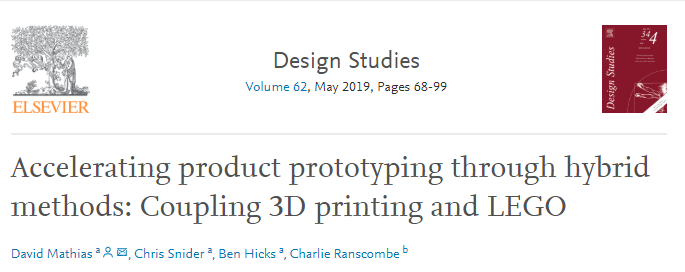Hybrid Prototyping’s first journal paper has been published in Design Studies, Vol 62. It describes a simulation study that investigates the potential benefits of coupling LEGO and low cost 3D printing as a novel Hybrid Prototyping tool. This is the fundamental underlying concept to David‘s Thesis on investigating and characterising hybrid prototyping and is a great milestone towards completing his PhD.
The paper’s abstract is below, but the full paper can be found here!
This paper introduces Hybrid Prototyping as a way to couple different prototyping methods; combining their complementary affordances and mitigating their limitations. To characterise and investigate this approach, a simulation-based study was conducted into the coupling of low-cost 3D printing and LEGO®. Key benefits hypothesised are reduced fabrication time and increased reconfigurability. Six primitive 3D shapes are simulated using a continuum of hypothetical brick sizes. Results show a reduction in fabrication time of 45% and a reconfigurability of 57% at the optimum. A case study highlights the compounded improvements over 3D printing for an iterative prototyping process. These findings mean that increases in prototyping iterations can be made due to reduced time and material costs, accelerating the product development process.
The paper’s abstract

